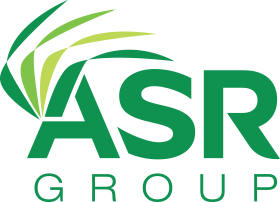USA
800 691 9120
UK
01225 704844
We use cookies on our website to analyze website usage and to help secure the website against misuse. Advertising and functional cookies are not used in our site or our web application products.
By clicking “Accept Essential Cookies Only”, you consent to us placing these cookies.
Our first article in this series gave an overview of how to construct and execute a best practice framework in fixed asset management. This article describes how to apply best practices to inventory management, asset related expenditure and depreciation.
Fixed or capital assets, like anything else owned by the corporation, must be properly managed to derive the maximum financial benefit from those assets. In many cases a corporation’s fixed assets constitute a large part of its balance sheet assets and are major contributing factors to revenue, production, and productivity. It is imperative that management knows the location, value, life cycle status and final disposition of those assets. A robust fixed asset management solution is a key resource in providing this critical information.
In general, fixed assets are differentiated from expense items based on their cost, purpose, and useful life. Fixed assets have a long useful life, are carried on the balance sheet as an asset, are depreciated over their useful life and are paid for out of a capital expense budget line item.
IFRS requires as follows:
Expense items are typically consumed or utilized, have little or no residual value and are expensed as they are acquired. The firm’s fixed asset policy will determine what items constitute fixed assets, approval processes for purchase and a cost limit over which an item is considered a fixed or capital asset.
Common types of fixed assets include
Typically, the acquisition of fixed assets requires an economic justification and/or a return-on-investment analysis. The assets estimated useful life, along with executive approval for the use of capital funds, will also be required. These requirements will be detailed in the firm’s fixed asset policies and procedures. In most firms, acquisition costs and records will be managed in the purchasing or supply chain records systems. This information will be critical in calculating the assets depreciation methodology and timeframe, as well as the residual values.
The expected useful life of the asset is also key in determining the depreciation method, depreciation timeframe and estimated residual value and disposition schedule. Assets that have a shorter useful life may be accounted for by using a depreciation method that recognizes more of the asset’s value earlier in its lifespan, such as sum of the year’s digits or double declining balance. Accounting for assets with longer lifespans can use the more traditional straight line depreciation method. Similarly, assets with shorter useful lifespans will have lower residual values and will typically be disposed of earlier than assets with a long-term value. The fixed asset policies and procedures should make determinations on the types of depreciation applied to various types of assets.
Following acquisition and deployment, fixed assets must be managed throughout their lifespans. Various information points need to be stored and easily retrievable if assets are to be efficiently managed. Key data points include:
Ideally, this information is contained in a single fixed asset management solution with extensive integration capabilities, a configurable database, and a flexible reporting system.
Integration is important, as information will be held in various systems. The company’s procurement software will likely contain the initial acquisition records.
Departmental budgets may be stored on spreadsheets or departments’ accounting systems. Importing this asset-based information into a central fixed asset management solution ensures the consistency of the information, avoids data entry related errors and is highly auditable. It also ensures accurate and consistent cost-basis information, which is critical for accurate depreciation calculations.
In addition to importing financial records related to assets, it is advantageous to import location and inventory records. Some companies utilize asset tags that identify the asset by number or some other form of identification and which are affixed to the asset itself. The fixed asset management solution can then support barcode audits where a scanner is used to record the location being scanned, and then scan the barcode of every asset in that location. An IT asset management system with a discovery tool can provide the location of network equipment automatically via an IP address to location mapping, although this technique is rarely is more accurate than a major part of a building.
In all cases, if the fixed asset management solution can import the asset information, then the cost and acquisition information can be included with the physical asset information in a single database record, providing a comprehensive view of each asset. In addition, if the purchasing system records indicate that an asset was purchased, but there is no corresponding asset inventory record, it may indicate that the asset is missing or was disposed-of at an earlier date. Conversely, if an asset has no corresponding purchase record, it may have been improperly acquired or may not be being properly accounted for in the financial records.
The fixed asset management solution can automatically calculate the depreciation for each asset, using the guidelines provided in the fixed asset policies and procedures. These calculations will provide critical accounting information needed for financial reporting, budgeting, regulatory filings and tax reporting. The same system can assist in tracking life-cycle status and the disposition of fixed assets.

In general depreciation is only calculated on assets which are in service, or available for service. When an asset is acquired, but not put in service, or when it is in construction, no depreciation is calculated and all costs are accrued. One exception to this is a feasibility study for a construction project. If the company is assembling a prototype asset to test feasibility, that asset is expensed on day one.
Sometimes an asset can still be in construction, yet it is already in service. For example, a machine to manufacture goods might have had additional modules and features added to it after production starts, or a piece of software might be put in service before it is finished to derive benefits as early as possible. In these cases, the normal practice is for the future investment in that asset to be capitalized, and the existing investment can be depreciated in the usual way.
Depreciation does not stop when an asset is taken out of service, but if it is to be disposed of, then the asset’s remaining net book value can be written off at the point of disposal (or at the point that it can no longer be recognized as an asset). If an asset is held for sale, then depreciation stops at the point it is held for sale and it is written down from the balance sheet at the point of sale. Some complexity exists here, for example if management intends to withdraw from sale if a fair price is not achieved, then it may be necessary to continue depreciating the asset.
An exception to the above is when an asset uses a “units of production” (UOP) depreciation rule – in this case, when the asset is no longer producing goods, depreciation resolves to zero, so no depreciation is posted. Some companies chose to switch to UOP methods during COVID times to reduce depreciation.
One major advantage of using a fixed asset management solution is it allows the firm to manage its fixed asset financials. With key information collected into a single system, management can easily track costs, current valuation, depreciation, any impairment and the residual value of any single asset or a collection of assets.
By including the original cost as part of an asset record, management can more easily determine the return on investment associated with the asset and has a basis for estimating replacement costs for aging assets. Similarly, the calculated valuation for each asset, based on purchase prices and depreciation calculations, can be easily determined and imported into the general ledger system. Calculating current valuations is particularly beneficial for companies with subsidiaries that report separately, and then provide information a fixed asset system and then updating the balance sheet, management has a clear and auditable record of the impairment at the asset level.
In addition, for companies operating in multiple countries, a robust fixed asset management system can maintain records in local currencies and calculate valuations in accordance with local regulations and in the home currency of the group. Consolidated information can be adjusted to reflect the currency of the primary corporation or holding company.
Asset impairments must be recorded when the fair value of an asset suddenly drops below its recorded cost. Asset impairments are accounted for by writing off the difference between the fair value and the recorded cost of the asset. By recording impairments in
Residual value is an estimate of the market value of the asset after it has been fully depreciated. Residual value must be included in financial statements and, under IFRS rules, needs to be evaluated as part of a company’s annual report. Recording the residual value for each asset individually in a fixed asset solution provides an accurate and easily managed source of this information.
Net Book Value reflects the value of the asset within the accounting books, and is not necessarily representative of the true (residual) value of the asset. It is calculated from the original value minus the accumulated depreciation to date, and can incorporate revaluation transactions. There is no need to “record” this value since all depreciation software will report this value from its calculations.
A fixed asset management solution, such as that offered by xAssets, provides management with a single, consolidated source of information on all of the company’s fixed assets. Key information, such as original costs, a comprehensive inventory, uniform depreciation calculations, multiple currency calculations, and impairment and residual value, can all be examined and recorded in one system and then exported to the corporate financial systems. A central, automated solution provides all levels of management with a complete picture of the company’s assets, where they are located and what they are worth at any point in time. For more information on fixed asset management solutions, and how they can benefit any company, go to https://www.xassets.com
Free instances are free forever and can show demo data or your data.































